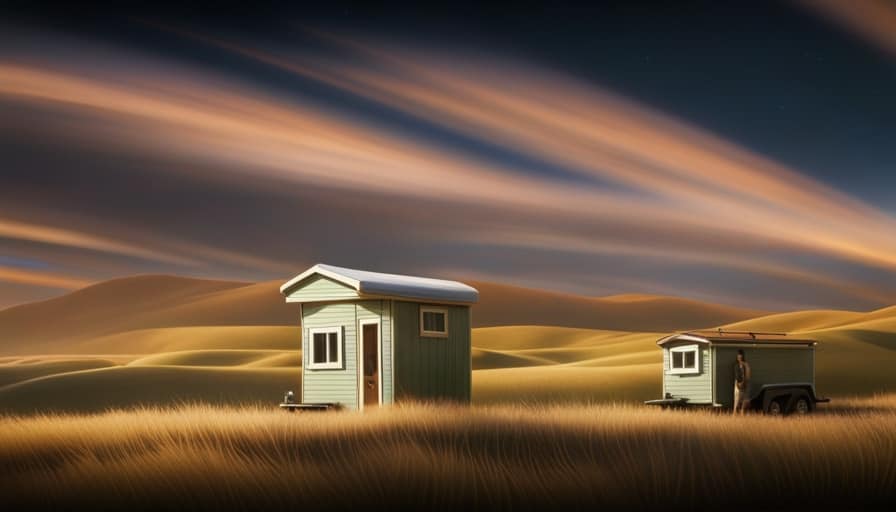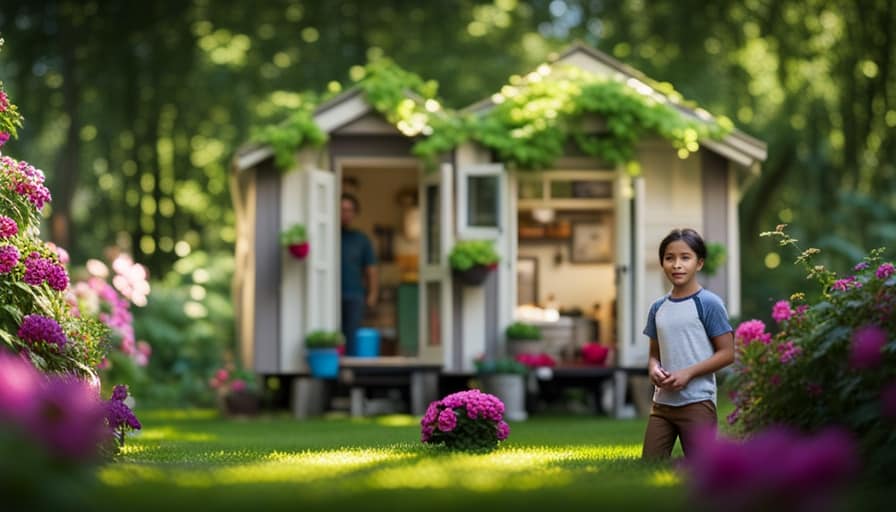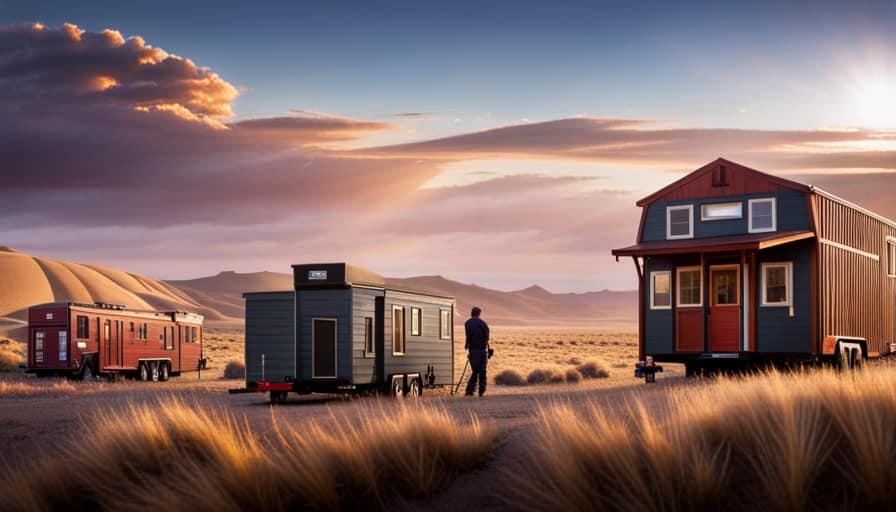I am here to help navigate you through the thrilling realm of land leasing for your very own tiny home.
Imagine unlocking the door to your cozy, eco-friendly home nestled on a piece of land that you can call your own.
In this article, I will walk you through the basics of land leasing, help you research available options, navigate legal considerations, and find the perfect location for your tiny house dream.
Let’s embark on this journey together and secure a land lease agreement for your tiny home.
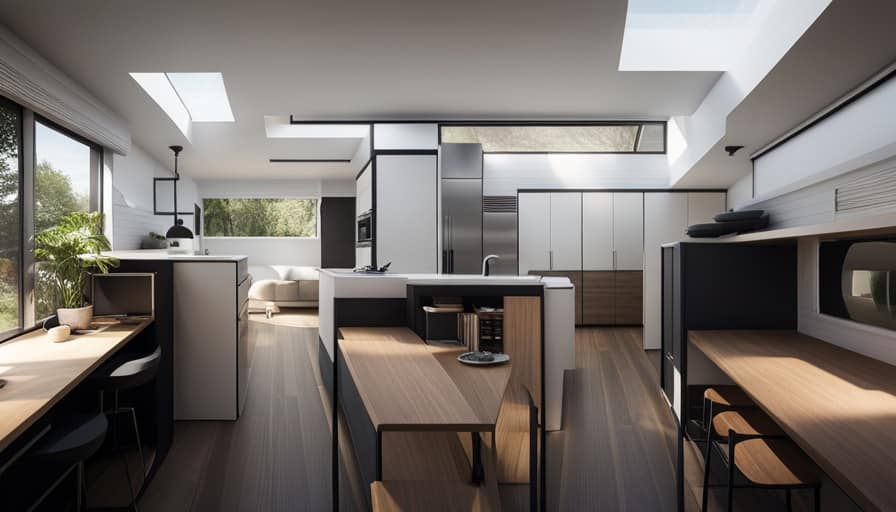
Key Takeaways
- Research local zoning laws and building codes to ensure compliance
- Explore affordable land lease options and community-based opportunities
- Understand and navigate zoning and legal considerations for tiny house land leasing
- Consider location factors such as proximity to services and amenities when searching for land to lease
Understanding the Basics of Land Leasing for a Tiny House
I can provide you with some key information on how to secure a land lease for a tiny house.
When it comes to understanding the basics of land leasing, there are two important factors to consider: researching regulations and financial considerations.
Researching regulations is crucial in order to ensure that you’re compliant with local zoning laws and building codes. Different areas may have specific requirements for the placement and construction of tiny houses.
Additionally, it’s important to understand the financial considerations involved in land leasing. This includes not only the cost of the lease itself, but also any additional fees or expenses that may be associated with the property.
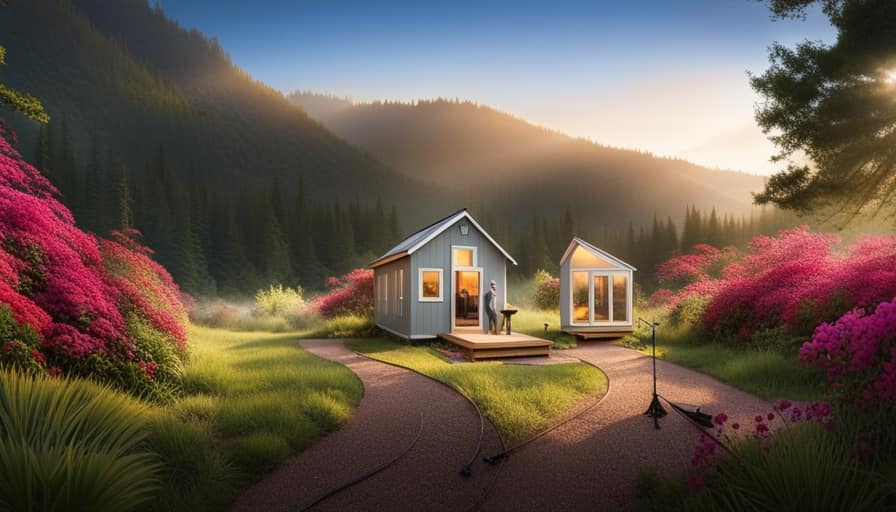
It’s essential to thoroughly research and understand these factors before entering into a land lease agreement for your tiny house.
Researching Available Land Lease Options for Tiny Homes
Before making a decision, it’s important to thoroughly research and compare the available land lease options for tiny homes. This will ensure that you find the best fit for your needs and budget. When researching, consider the following options:
-
Finding affordable land lease options for tiny homes: Look for land lease opportunities that offer reasonable rates and terms. This will help you keep your expenses low and make your tiny house living more affordable.
-
Exploring community-based land lease opportunities for tiny houses: Consider joining a community that’s specifically designed for tiny house living. These communities often have land lease options available and offer a sense of community and support.
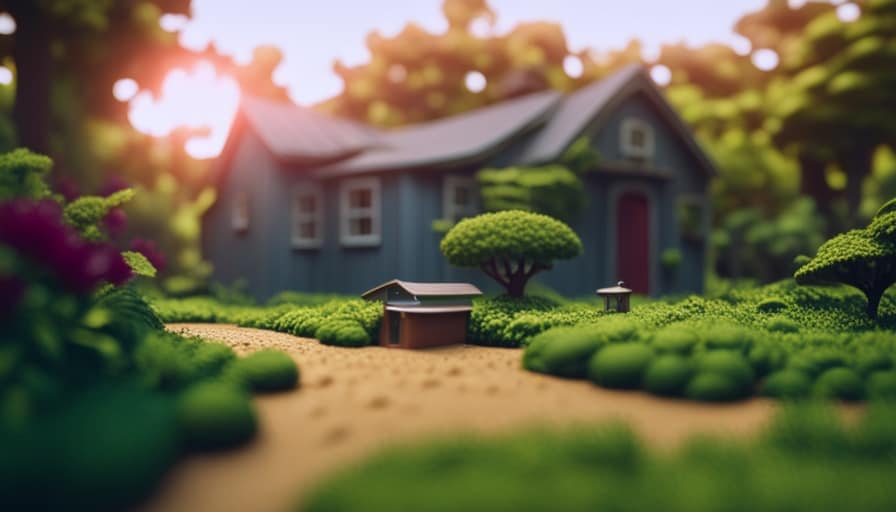
-
Checking local zoning and regulations: Before committing to a land lease, make sure to research the local zoning and regulations regarding tiny homes. Ensure that the land you’re considering is zoned for tiny houses and that there are no restrictions that would prevent you from living in your tiny home.
-
Reading reviews and testimonials: Take the time to read reviews and testimonials from others who’ve leased land for their tiny homes. This will give you valuable insights into the experience and help you make an informed decision.
Navigating Zoning and Legal Considerations for Tiny House Land Leasing
When navigating zoning and legal considerations for tiny house land leasing, it’s important to understand the regulations and restrictions in place as well as the necessary permits and approvals.
Zoning restrictions vary from one location to another, so it’s crucial to research and understand the specific regulations of the area where you plan to lease land for your tiny house. Some areas may have minimum square footage requirements or specific building codes that must be followed.
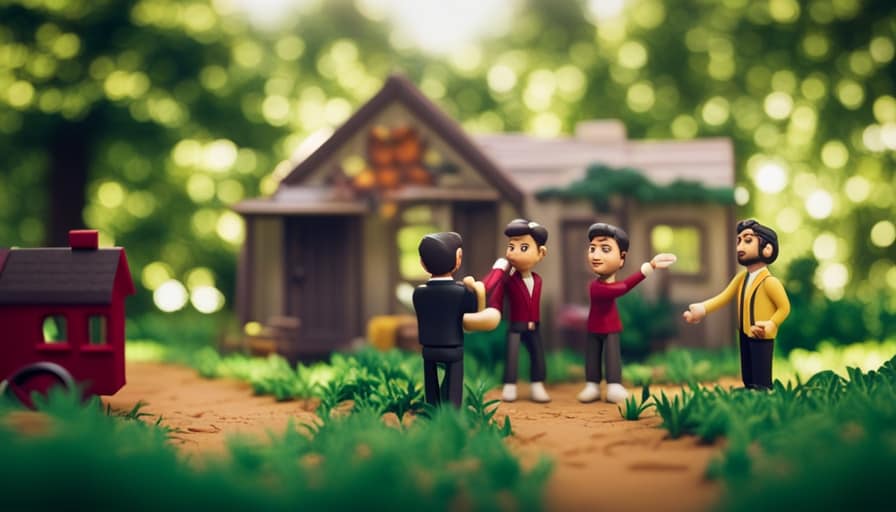
Additionally, legal requirements such as obtaining permits and approvals from local authorities may be necessary before you can lease land for your tiny house. By adhering to these regulations and obtaining the necessary permits, you can ensure a smooth and legal process for land leasing.
Now that we understand the zoning and legal considerations, let’s explore how to find the perfect location for land leasing a tiny house.
Finding the Perfect Location for Land Leasing a Tiny House
To find the perfect location for land leasing a tiny house, consider the amenities and proximity to essential services. When searching for a spot to lease for your tiny house, keep in mind the following factors:
-
Budget-friendly options: Look for locations that offer affordable leasing rates, allowing you to make the most of your budget.
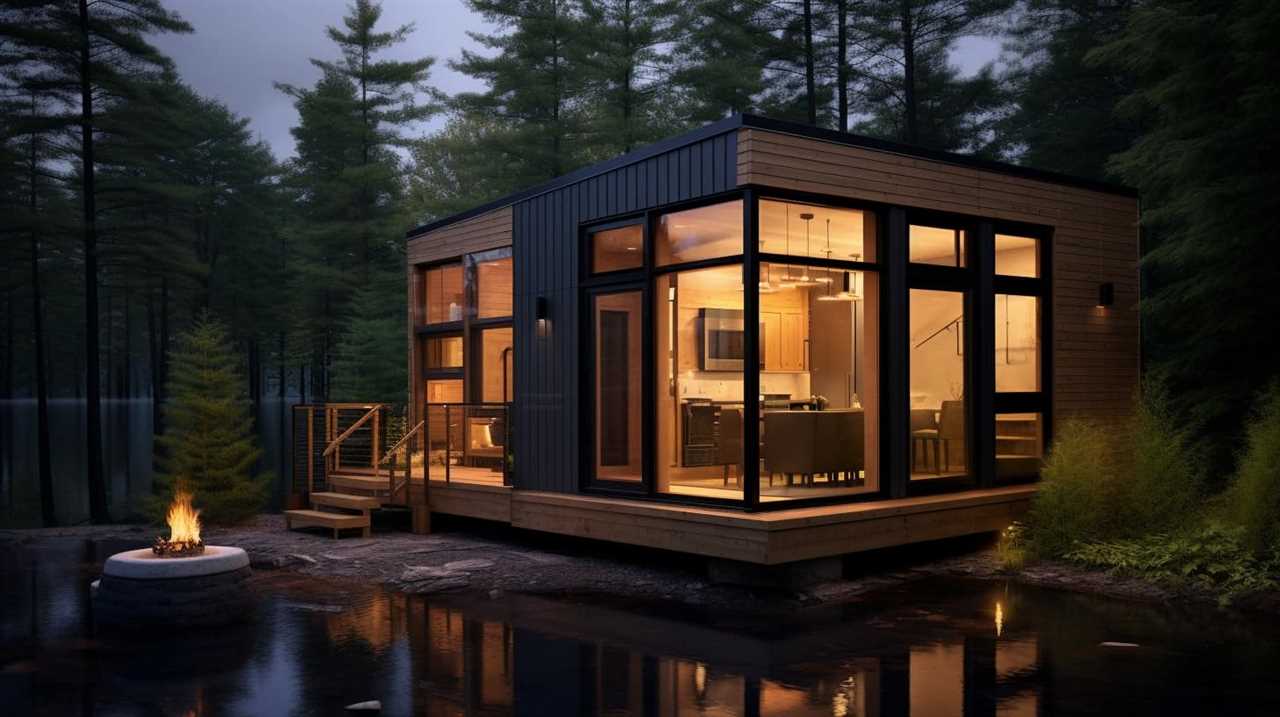
-
Access to essential services: Ensure the location is close to essential services such as grocery stores, medical facilities, and schools, providing convenience for daily needs.
-
Off-grid possibilities: If you’re considering living off-grid, look for locations that allow for alternative energy sources, such as solar panels or wind turbines.
-
Natural surroundings: Consider leasing land in areas with beautiful scenery, such as near a lake or in the mountains, allowing you to enjoy a peaceful and serene environment.
Securing a Land Lease Agreement for Your Tiny Home
After researching potential landlords and discussing my needs, I was able to secure a land lease agreement for my tiny home. Finding landowners who are open to leasing their property for a tiny house can be a challenge, but with persistence and thorough research, it’s possible to find a suitable arrangement.

When approaching landowners, it’s important to present yourself as a responsible and reliable tenant, emphasizing the benefits of having a tiny house on their property, such as additional income or increased security. Negotiating the terms of the lease agreement is crucial to ensure that both parties are satisfied. This includes discussing the duration of the lease, rent payments, and any restrictions or permissions regarding the use of the land.
Frequently Asked Questions
Can I Lease Land for a Tiny House in a Residential Neighborhood?
I can lease land for a tiny house in a residential neighborhood. However, it is important to consider the residential zoning and community regulations that may restrict this type of arrangement.
What Are the Typical Costs Associated With Leasing Land for a Tiny House?
When considering leasing land for a tiny house, cost considerations and finding suitable land are crucial. It’s important to research zoning regulations, negotiate a fair lease agreement, and budget for expenses like utilities and maintenance.
Are There Any Restrictions on the Size or Design of a Tiny House When Leasing Land?
When leasing land for a tiny house, it’s important to consider any size or design restrictions that may be in place. These restrictions can vary depending on the location and regulations set by the landowner or local authorities.
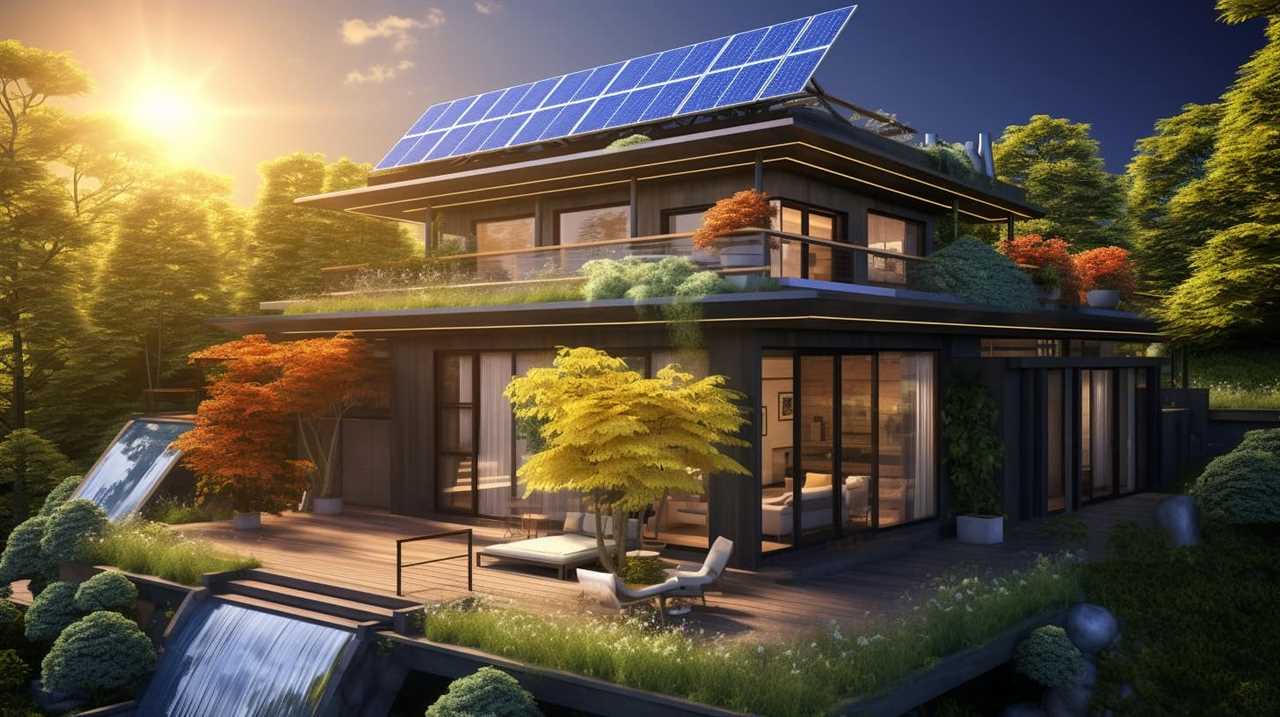
How Long Does a Land Lease Agreement for a Tiny House Typically Last?
Typically, a land lease agreement for a tiny house lasts for a specific duration, like a year or two. However, it can be renewed if both parties agree. It’s important to discuss lease terms and renewal options with the landowner.
Are There Any Specific Insurance Requirements for Leasing Land for a Tiny House?
There are specific insurance requirements for leasing land for a tiny house. As a landlord, you may require insurance coverage to protect your property. It’s important to discuss these requirements with your potential tenants.
Conclusion
In conclusion, landing a land lease for a tiny house requires thorough research, understanding zoning laws, and finding the perfect location.
It may seem like a daunting process, but with determination and the right resources, you can secure a land lease agreement for your tiny home.
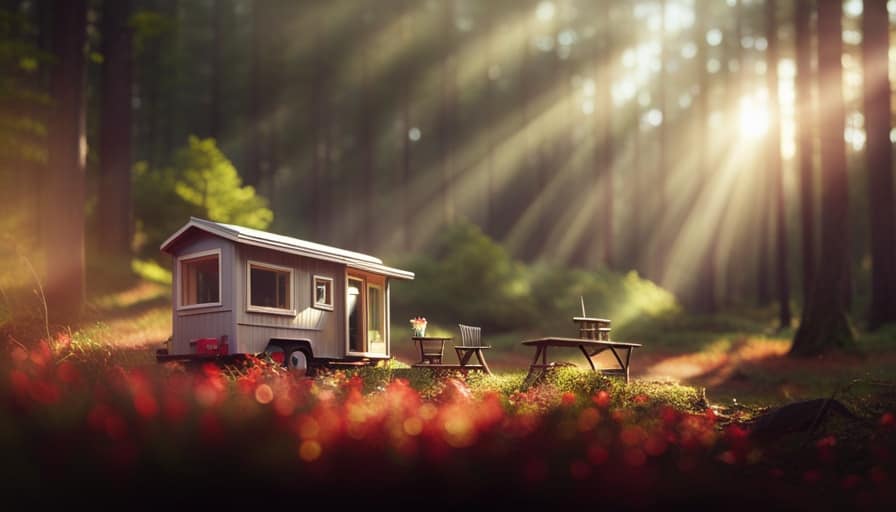
Remember, Rome wasn’t built in a day, and neither is finding the perfect spot for your tiny house. So, don’t rush the process and take your time to ensure a successful land lease for your dream tiny home.
I’m Theodore, and I love tiny houses. In fact, I’m the author of Tiny House 43, a book about tiny houses that are also tree houses. I think they’re magical places where imaginations can run wild and adventures are just waiting to happen.
While tree houses are often associated with childhood, they can be the perfect adult retreat. They offer a cozy space to relax and unwind, surrounded by nature. And since they’re typically built on stilts or raised platforms, they offer stunning views that traditional homes simply can’t match.
If you’re looking for a unique and romantic getaway, a tree house tiny house might just be the perfect option.
